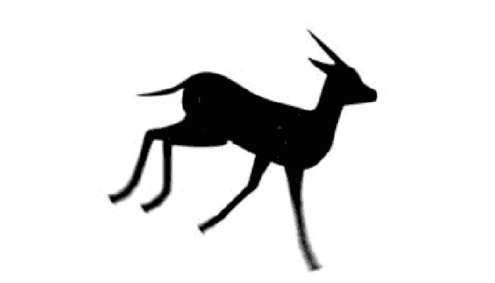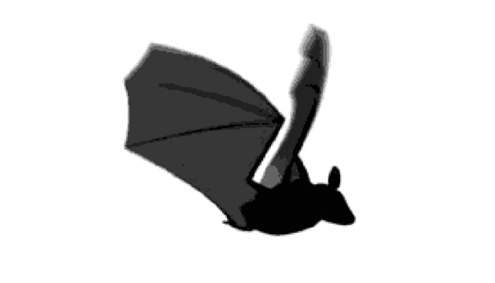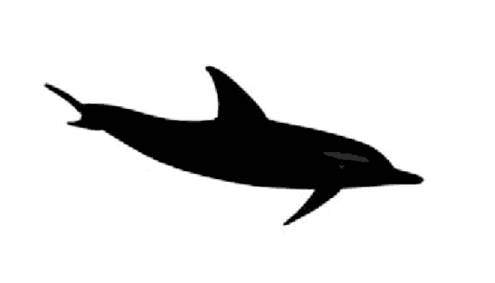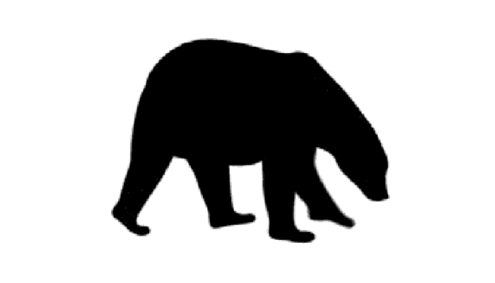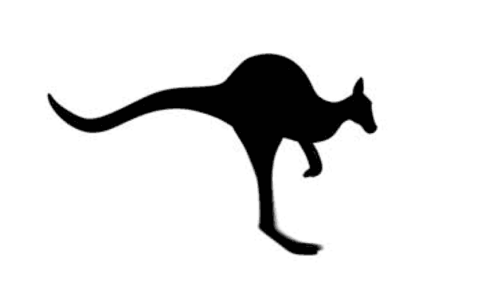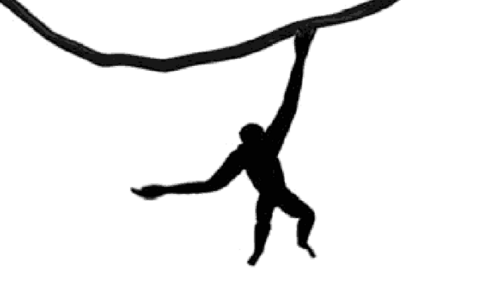
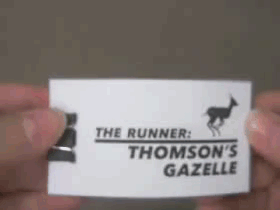
Explore mammals locomotion with these flipbooks. With more than 5,400 species, mammals move in all kinds of ways. They burrow, walk, hop, gallop, or swing from trees. They swim, dive, glide, or even fly!
What You'll Need

paper

scissors
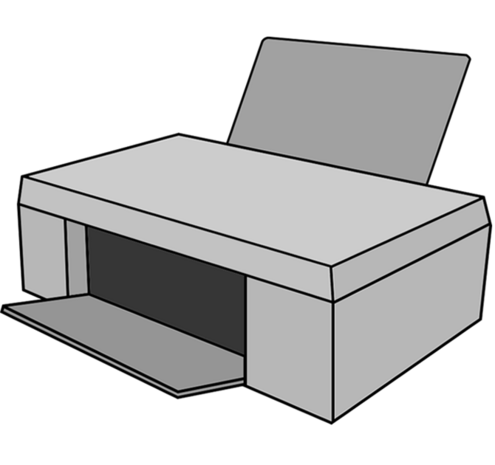
a printer

a binder clip
PDF Downloads
THE RUNNER: Thomson's Gazelle
• Top speed: 50 miles per hour (80 kph)
• Lives in dry grasslands of Kenya and Tanzania)
Thomson's gazelles' delicate but sturdy and strong legs help them run quickly for long periods of time. That's a useful trait when you're trying to escape lions and other predators! Sometimes, gazelles jump straight up into the air from a standstill. This is called stotting.
THE FLYER: Short-Nosed Fruit Bat
• Top speed: unknown
• Lives in tropical forests of South Asia
Bats are the only mammals that fly. Their wings extend from the tips of their fingers down to their feet. Bats bend their wings when they lift them during flight. This creates a spiraling air current under each wing, making bats very acrobatic flyers!
THE SWIMMER: Long-Beaked Common Dolphin
• Top speed: 24 miles per hour (38 kph)
• Lives along coasts in warm and temperate oceans
Dolphins don't swim the way fish do. Fish swim by moving side to side. Dolphins and other whales move their wide, strong tales up and down to propel their bodies forward. Dolphins' bodies are torpedo-shaped and streamlined to move through the water quickly.
THE AMBLER: American Black Bear
• Top speed: More than 30 miles per hour (48 kph)
• Lives in forests of North America
Bears walk the same way humans do-on flat feet. Bears normally walk on all four paws. But because they have flat feet, they can stand on two legs with great stability. They can even walk upright, but only for short distances and very slowly.
THE HOPPER: Red Kangaroo
• Top speed: 37 miles per hour (60 kph)
• Lives throughout dry habitats of inland Australia
Kangaroos can hop for hours at a time. Their strong and elongated toes on the hind feet provide a springboard for hopping. To go faster, kangaroos simply lengthen their hops. These marsupials can travel as long as 45 feet (13.5 meters) in a single hop!
THE SWINGER: White-Handed Gibbon
• Top speed: 35 miles per hour (56 kph)
• Lives in forests in Southeast Asia
Gibbons spend their lives in trees-they barely ever touch the ground. These primates use their long arms to swing through trees. Their long, curved, and strong fingers act like hooks that hold the gibbon's weight as it swings. They can swing across more than 30 feet (10 meters)!
What To Do

Download and print the PDFs.

Cut along dotted lines to create the flipbook pages.

Stack the pages by number with page 1 on top.

Place the cover page on top of the stack.

Make sure all the pages are lined up well especially at the right edge.

Fasten pages with the binder clip on the left side of the stack.

Hold the book with your left hand and flip through the pages with your thumb from the right hand.

Watch how a mammal moves!




 Biodiversity
Biodiversity
 Brain
Brain
 Genetics
Genetics
 Marine BiOLogy
Marine BiOLogy
 MicrobiOLogy
MicrobiOLogy
 PaleontOLogy
PaleontOLogy
 ZoOLogy
ZoOLogy
 AnthropOLogy
AnthropOLogy
 ArchaeOLogy
ArchaeOLogy
 Astronomy
Astronomy
 Climate Change
Climate Change
 Earth
Earth
 Physics
Physics
 Water
Water

